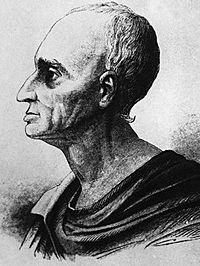Andreas Sigismund Marggraf facts for kids
Quick facts for kids
Andreas Sigismund Marggraf
|
|
|---|---|

Engraving of Marggraf, circa 1770
|
|
| Born | 3 March 1709 Berlin, Margraviate of Brandenburg
|
| Died | 7 August 1782 (aged 73) Berlin, Margraviate of Brandenburg
|
| Nationality | German |
| Known for | Isolating zinc |
| Scientific career | |
| Notable students | Franz Karl Achard |
Andreas Sigismund Marggraf (born March 3, 1709 – died August 7, 1782) was an important German chemist from Berlin. He was a pioneer in a field called analytical chemistry, which is about figuring out what different substances are made of.
Marggraf is famous for being the first to clearly describe how to get the metal zinc from a mineral called calamine. He did this in 1746. He also made a big discovery in 1747: he found sugar in beets! This was a huge step for the sugar industry. His student, Franz Carl Achard, later found a way to extract this sugar cheaply on a large scale.
Contents
Life of a Pioneer Chemist
Andreas Sigismund Marggraf grew up around science. His father, Henning Christian Marggraf, owned a pharmacy in Berlin and taught at a medical school. Andreas started studying at this medical school in 1725.
He learned from famous chemists like Caspar Neumann. He also visited pharmacies in other cities, including Frankfurt am Main and Strassbourg, to learn more. He even attended lectures at the University of Halle. Andreas worked in his father's pharmacy and focused a lot on chemistry.
Later in his life, he helped to reorganize a scientific society in Berlin. This society became the Prussian Academy of Science. Marggraf became the director of its physics section in 1760. He continued his work in the Academy's laboratories even after having a stroke in 1774. He retired in 1781.
Marggraf's Scientific Discoveries
Marggraf brought many new ways of doing experiments into chemistry. He used methods like precipitation for analysis. This is a process where a solid forms out of a liquid. For example, he used a reaction called the Prussian blue reaction to find iron in substances.
In his work with inorganic chemistry, he improved how to make phosphorus from urine. He also found alkali metal salts in plant ash. He could identify these salts using a flame test, which means burning a small sample and looking at the color of the flame.
Sugar from Beets
One of Marggraf's most important discoveries was finding sugar in beets. Before this, sugar mostly came from sugarcane. His discovery was the starting point for the entire sugar industry in Europe and the modern sugar industry worldwide.
Even though Marggraf knew his discovery could be very important for the economy, he didn't continue working on it himself. Instead, his student, Franz Carl Achard, took over. Achard developed an affordable way to extract sugar from sugar beets on a large scale. Marggraf also isolated glucose from raisins in 1747.
Isolating the Metal Zinc
Marggraf successfully isolated zinc in 1746. He did this by heating a mixture of calamine (a mineral) and carbon in a sealed container. He didn't know that other people, like William Champion in England and Anton von Swab in Sweden, had also found ways to get zinc around the same time.
However, Marggraf was the first to describe the process in great detail. He also explained the basic scientific ideas behind it. Because of his clear explanation, he is often given credit for the isolation of zinc. His method became practical for businesses by 1752.
See Also
 In Spanish: Andreas Sigismund Marggraf para niños
In Spanish: Andreas Sigismund Marggraf para niños

